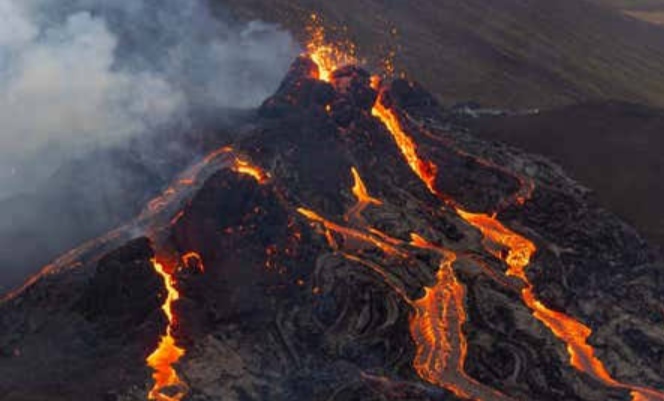Iceland is well known for Volcanic activities as we can find eruptions at least once in every five years. Currently there are about 32 active volcanic systems in Iceland. According to the reports of Icelandic Meteorological Office (IMO, monitors seismic activities) , on 19th of march 2021 Friday, at around 20:45 Greenwich Mean Time a volcano began to erupt in Iceland’s Reykjanes peninsula. The eruption that occurred in Geldingadalur which lies to the south of Mount Fagradalsfjall emitted fresh red bubbling lava out of a fissure . The river of lava was visible from Reykjavik’s capital city which is almost 30kms away. The volcanic eruption put up a fantabulous view to the world which urged the people to capture the magnificent scene. Hence people had been flying drones to shoot the spectacular volcanic eruption. It seems like the “eruptive fissure” was around 1640 feet to 2300 feet in measure. The eruption has been in the Krysuvik volcanic system, which has no central volcano.
This phenomena had occurred for the first time in the past 800 years. Experts had predicted the eruption earlier when thousands of small earthquakes had been detected in the month of February and March this year on the Reykjanes peninsula and also the experts had warned about the movement of magma under the surface of the earth which could have erupted any time. Currently danger is limited to the proximity of the eruption site and its surrounding valleys. But scientists had mentioned that incase of continuation of eruption at a rate of 5.8 cubic meters for more than 12 days would flood the nearby valleys with lava and can overflow into neighboring valleys too. They have analyzed that the eruption would continue for a few more days.
Later on the rain shower slowed down the flow of lava due to which blue gas plume and vapor cloud was produced near the Blue Lagoon geo-thermal spa. The authorities were concerned about the eruption interrupting air travel. In the year 2010 Eyjafjallajokull volcano had occurred and it had produced ash and dust into the atmosphere which led to interruption in air travel as those materials might damage jet engines. Nearly 1 lakh flights with millions of passengers were grounded. Recently, Keflavik Airport which is an international air traffic hub of Iceland stated that flights had remained to schedule since the volcanic eruption had started.

